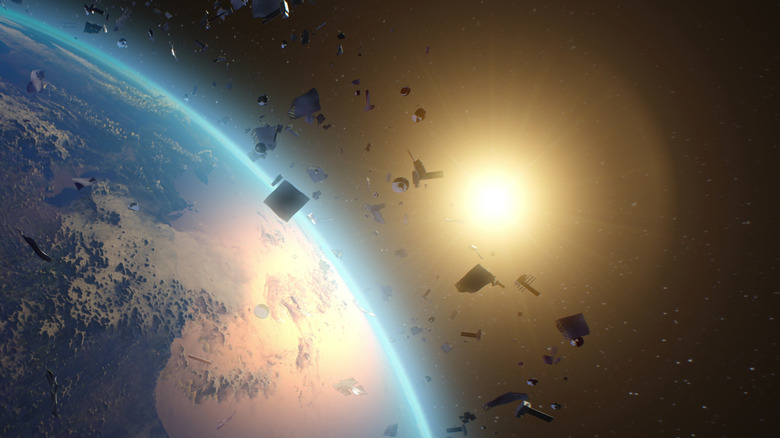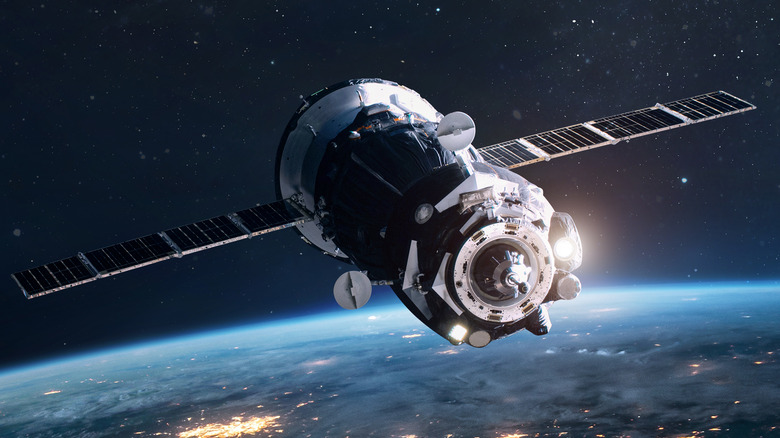The Truth About Space Junk
Lately all the mega-rich dudes like Jeff Bezos and Elon Musk seem hell-bent on making it to space, shooting manned and unmanned rockets into orbit with plans for commercial space flights in the not-so-distant future, according to the BBC. This mix of private and public space exploration has left a lot of stuff up there, from miscellaneous man-made debris to what's left over after satellites collide, as the British Natural History Museum reports. This phenomenon has come to be called "space junk," and it's getting worse. With an estimated 50,000 additional satellite launches anticipated in the next few years, managing space junk grows increasingly urgent.
In 2022, it was announced that part of an unmanned rocket launched by Musk's SpaceX company in 2015, which has been locked into a broad orbit around the Earth, was expected to crash into the far side of the moon (via The Verge). It's unlikely that human interest in space travel will go anywhere anytime soon (not if Richard Branson has anything to say about it). So beyond just the occasional moonscape crash landing that scientists now anticipate, what are the risks of excess space junk, and what can be done about it?
We have to clean it up
According to the British Natural History Museum, the primary risk of uncontrolled space junk is the "Kessler Syndrome." What that means is, as satellites and other objects up there in orbit break up, those bits and pieces will continue smashing into themselves, creating more and more clutter, and leaving Earth's orbit virtually impassable. That's a worst-case scenario, as the NHM reports, but even a best-case version of the "Kessler Syndrome" could create significant issues for anyone interested in traveling to space, whether with a private company or in a government-backed mission.
To help address the issue, the United Nations ruled that anyone putting stuff in orbit, public or private, has to clean up after themselves within 25 years after their mission is complete, but that's hard to enforce. In response, companies are proposing some pretty sci-fi ideas to take care of the junk left behind in both manned and unmanned space travel, ranging from harpooning dead satellites and dragging them back into the Earth's atmosphere where they'll eventually burn up, to using nets, magnets, and even lasers to destroy our space garbage, per the NHM. Some space junk drifts back into the atmosphere, taking care of the problem all on its own. As far as that SpaceX rocket is concerned, it's anticipated that the moon will absorb the impact without an issue, but space junk mitigation measures should weigh heavily on the minds of anyone interested in making space travel a reality.

